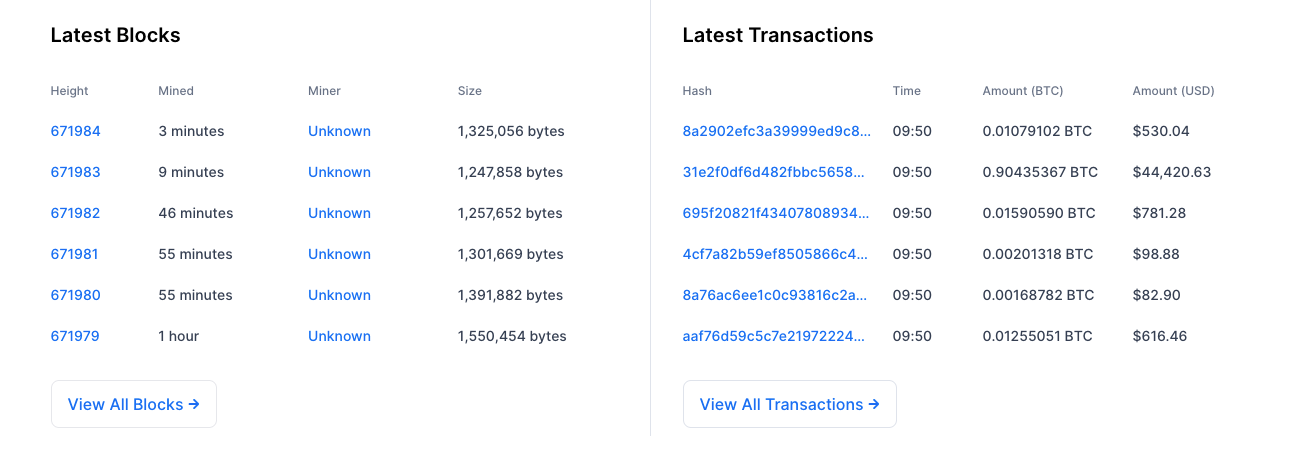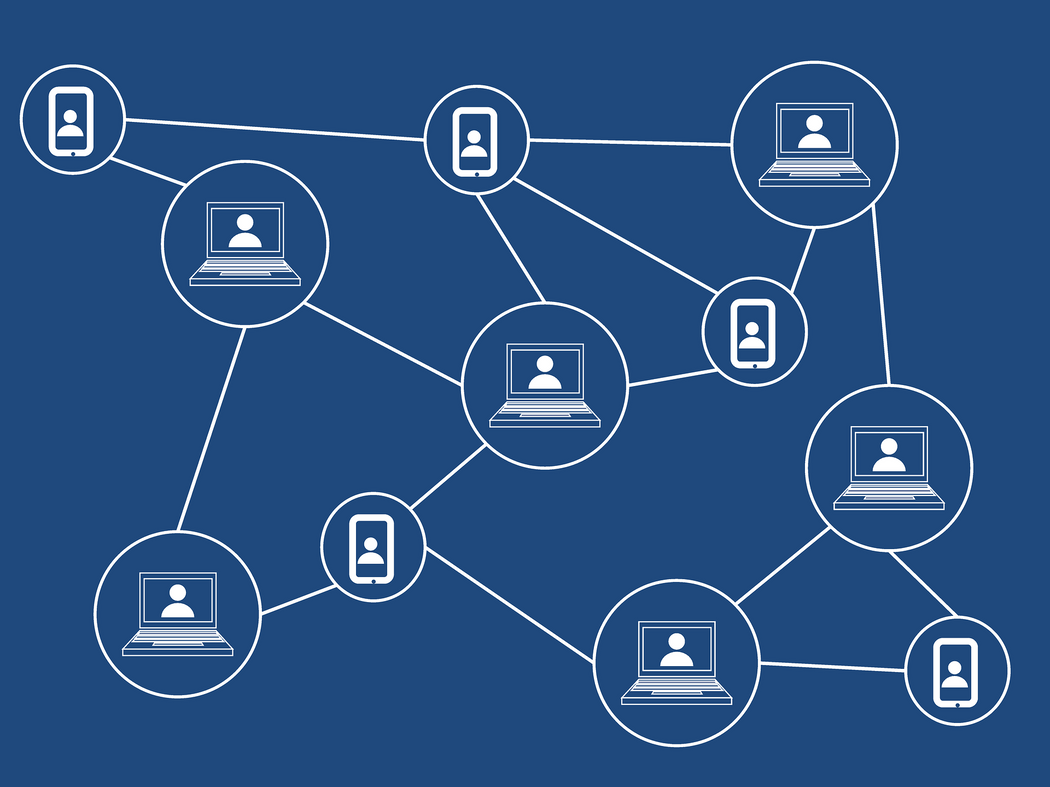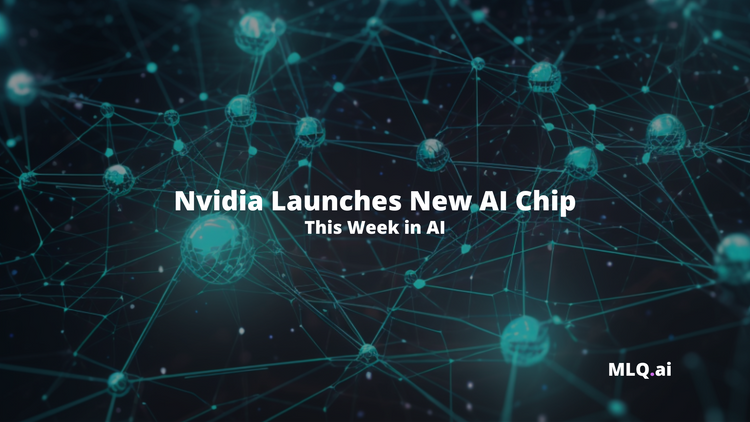In this guide, we'll introduce the fundamental concepts of blockchain technology including its structure, basic operations, and the Bitcoin blockchain.
This article is based on notes from the first course in this Blockchain Specialization and is organized as follows:
- What is Blockchain Technology?
- Defining the Bitcoin Blockchain
- Centralized vs. Decentralized Networks
- Blockchain Structure
- Basic Blockchain Operations
Stay up to date with AI
What is Blockchain Technology?
Blockchain technology enables the peer-to-peer transfer of assets without any intermediaries. As EuroMoney describes:
A blockchain is essentially a digital ledger of transactions that is duplicated and distributed across the entire network of computer systems on the blockchain.
Blockchain technology was originally conceptualized and introduced to support the largest cryptocurrency by market capitalization: bitcoin.
Since its origination, blockchain technology has taken on a life of its own in terms of applications, projects, and of course, cryptocurrencies.
After more than a decade since its conceptualization conceptualized by a person (or group of people) known as Satoshi Nakamoto in 2008, blockchain is permeating nearly every industry, including:
- Finance
- Healthcare
- Government
- Manufacturing
- Supply chains and distribution
Specifically, a few real-world examples of blockchains application in these industries include:
- Digital media transfer: for example the sale of art and collectibles with non-fungible tokens (NFTs)
- Remote services delivery: for example in the travel and tourism industry
- Decentralized business logic: for example moving computing to data sources
- Distributed intelligence: for example in education credentialing
- Distributed resources: for example, in power generation and distribution
- Crowdfunding: for example in startup financing
- Crowd operations: for example, in electronic voting
- Identity management: for example, having a single ID
- And many more
Blockchain offers the opportunity for people in remote corners of the world to take part in democratic processes.
In short, there is a tremendous opportunity for entrepreneurs, developers, and innovators to create new applications and use cases built on top of blockchain technology.
In order to better understand this technology, we'll discuss both the Bitcoin and Ethereum blockchain in more detail below.
We'll also explain several of the algorithms and techniques that are commonly used in a blockchain.
Defining the Bitcoin Blockchain
The two major contributions of the cryptocurrency bitcoin include:
- A continuously working digital currency system
- A model for an autonomous decentralized application technology called a blockchain
One of the key innovations of the Bitcoin blockchain is that it enabled a platform for the peer-to-peer transfer of value without any central authority.
So how did the blockchain enable trust and security without any central authority?
At a high level, it implemented cryptography and software that is used for validation, verification, and consensus in a blockchain infrastructure.
A few years later in 2012, several computational elements were added to the blockchain infrastructure that opened up a new level of opportunities beyond just currency transfers.
These innovations are the backbone of what is referred to as "Web 3.0". To give you some context, Web 2.0 was driven by three layers of innovation including mobile, social, and cloud computing.
As Fabric Ventures describes in their article on Web 3.0, this includes:
...edge computing, decentralised data networks, and artificial intelligence
To recap, at its core blockchain technology enables three main innovations:
- Peer-to-peer transactions in a decentralized network
- Establishing trust among unknown peers
- Recording transactions in an immutable distributed ledger
Centralized vs. Decentralized Networks
To better understand blockchain technology, let's now review a real-world situation of paying for a cup of coffee with a credit card. In this example of a centralized network, there are several intermediaries to facilitate the transaction:
- The customer's bank
- The credit card's bank
- A credit card agency
- An exchange
- The merchant's bank
- The merchant
In a decentralized system, the customer and merchant could transact directly with one another. In this case, functions of the intermediaries are shifted to the periphery—to the peer-to-peer participants in the blockchain infrastructure.
These peers are not necessarily known to each other, although they are able to establish trust by having a process that can validate, verify, and confirm transactions.
Transactions are also recorded in a distributed ledger of blocks, which creates a chain of blocks that cannot be tampered with.
A blockchain also has a consensus protocol that defines an agreement of how a block will be added to the chain.
Through these mechanisms of validation, verification, consensus, and immutable record-keeping lead to trust and security between peers of a blockchain.
To learn more about the Bitcoin blockchain, you can find the original whitepaper here.
Blockchain Structure
In this section, we'll review the basic structure of a blockchain.
In the Bitcoin blockchain, transactions are a basic element:
- Transactions are validated and broadcast
- Many transactions form a single block
- Many blocks form a chain
Blocks go through a consensus process that selects which the next block to be added to the chain.
The chosen block is then verified and added to the chain.
This validation process is done by special peer nodes called miners.
Understanding a Single Transaction in the Bitcoin Blockchain
Let's now review a single transaction in the Bitcoin network.
A core concept of the bitcoin network is an Unspent Transaction Output, otherwise known as UTXO.
The set of all UTXOs in the Bitcoin network collectively translate the state of the Bitcoin blockchain.
UTXOs are referenced as the inputs of a transaction and are also the outputs generated from a transaction.
All UTXOs in the system are stored by the network's participant nodes in a database.
In the Bitcoin blockchain, a transaction uses the amount specified by one or more UTXOs and transmits it to one or more new output UTXOs.
The structure of a UTXO includes:
- A unique identifier of the transaction that created the UTXO
- An index of the position of the UTXO in the transaction output lists
- A value of the transaction
- An optional script that specifies the conditions of which the output can be spent
The transaction itself includes the following elements:
- A reference number of the current transaction
- Reference(s) to one of more input UTXOs
- Reference(s) to one of more output UTXOs generated from the current transaction
- The total input and output amount
You can learn more about blockchain transactions on the Blockchain Explorer website:

Basic Blockchain Operations
In this section, we'll review the basic operations of a blockchain.
Operations in a decentralized networks are the responsibility of the peer participants and their respective computational nodes.
In particular, these operations include:
- Gathering the transactions for a block
- Broadcasting valid transactions and blocks
- Reaching consensus on the next block to be created
- Chaining the blocks together to form an immutable record
Bitcoin Blockchain Operations
Let's take a look at the operations of the Bitcoin blockchain in more detail.
There are two major participants in the bitcoin network...
The first participants are people that initiate the transfer of value by creating a transaction.
The second group of participants are called miners, which provide the computational resources needed to:
- Verify transactions
- Broadcast transactions
- Compete for the right to create a block
- Reach consensus by validating the block
- Broadcast the new block
- Confirm transactions
For these computational resources provided by miners, they are incentivized and rewarded with newly minted bitcoin, which is currently set at 6.25 BTC.
The algorithm that miners use to reach consensus is called the proof-of-work protocol, which t requires the miner to provide the computational work required to solve a puzzle and claim the right to add a new block to the chain.
To summarize, the main operations in a blockchain include transaction validation and block creation with a consensus of the participants.
Beyond the Bitcoin Blockchain
In this introductory article, we've focused on the Bitcoin blockchain, which is entirely open source and available on Github.
In addition to the bitcoin cryptocurrency, the Bitcoin blockchain supports an optional feature called scripts for the conditional transfer of values.
The Ethereum blockchain extended this scripting feature into a complete execution framework called smart contracts.
A smart contract provides the powerful capability of code execution that embeds business logic into the blockchain.
Based on these capabilities, three major types of blockchains have emerged:
- Only Cryptocurrency: Coins in the cryptocurrency chain, for example, Bitcoin
- Cryptocurrency + Business Logic: This provides a layer of business logic supported by software execution, for example, Ethereum
- Only Business Logic: This type has no cryptocurrency and only supports software execution for business logic, for example, the Linux Foundation's Hyperledger
With the addition of business logic and code execution comes the consideration of who has access to the blockchain.
There are three main categories of blockchain access:
- Public: Bitcoin is an example of a public blockchain in which anyone can join and transact with other participants
- Private: Access is limited to select participants of an organization
- Permissioned: Also called a consortium blockchain, this type is meant for a consortium of collaborating partings to transact on a blockchain. Permissioned blockchains have the benefit of a public blockchain while allowing only users with permission to collaborate and transact.
In summary, smart contracts have taken the innovation of the Bitcoin blockchain to another level by opening up broader applications of the technology.
Summary: Blockchain Basics
A few key takeaways about the basics of blockchain technology:
- One of the key innovations of the Bitcoin blockchain is that it enabled a platform for the peer-to-peer transfer of value without any central authority
- Operations in a decentralized network are the responsibility of the peer participants and their respective computational nodes.
- A smart contract provides the powerful capability of code execution that embeds business logic into the blockchain.






